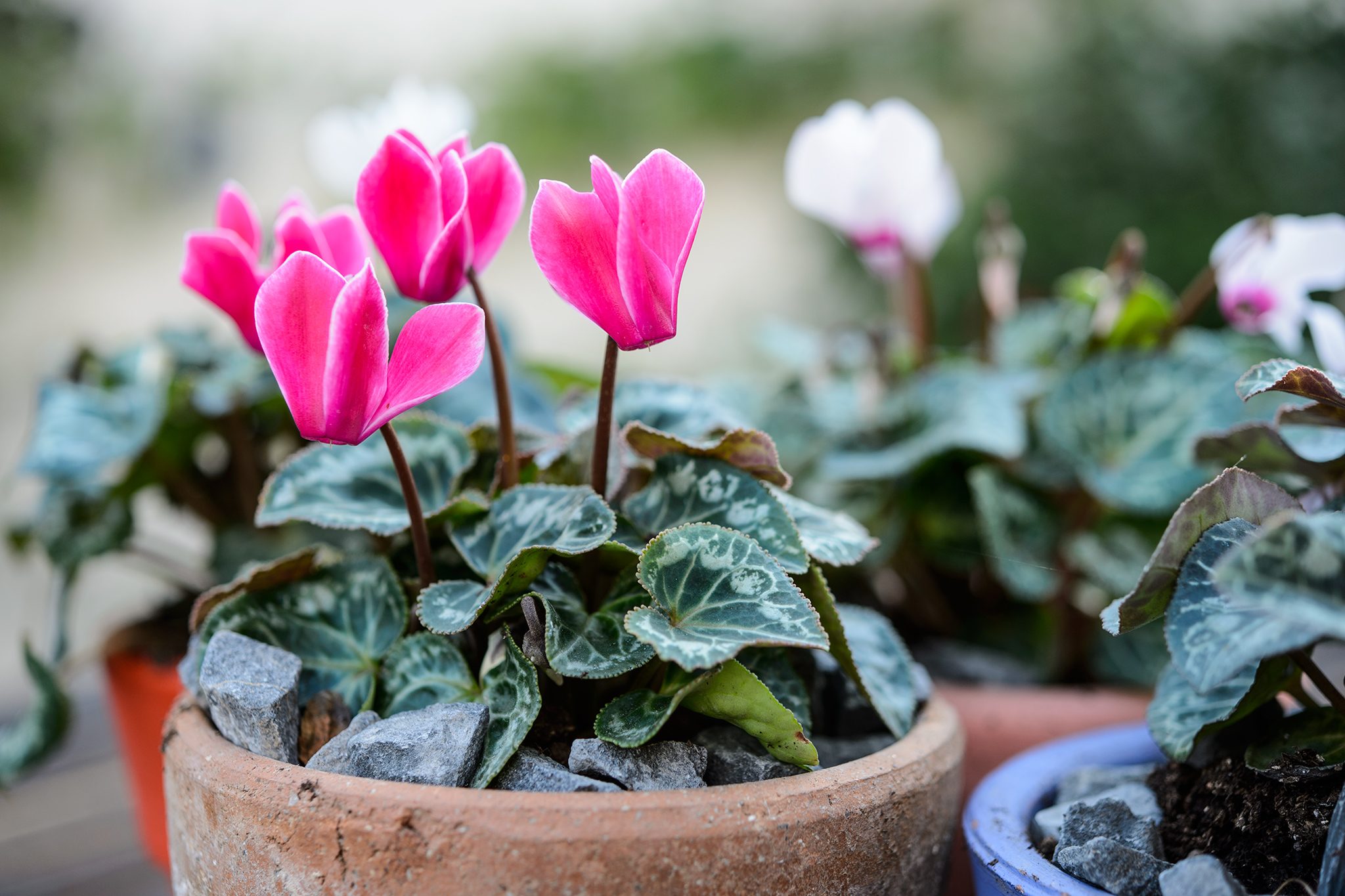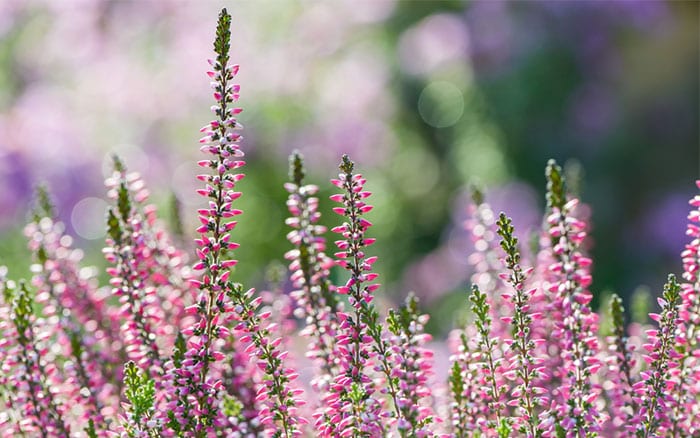If you’re looking to add a splash of color and vibrancy to your outdoor space this winter, look no further than your trusty pots. With the right selection of winter plants, you can create a stunning display that will brighten up even the gloomiest of days. From vibrant blooms to evergreen foliage, there are plenty of options to choose from that will thrive in pots during the colder months. Whether you’re a seasoned gardener or a beginner, this article will guide you through the best winter plants for pots, ensuring that your outdoor space stays lively and inviting all season long. Say goodbye to dull winter landscapes and hello to a stunning garden that will make you the envy of the neighborhood.
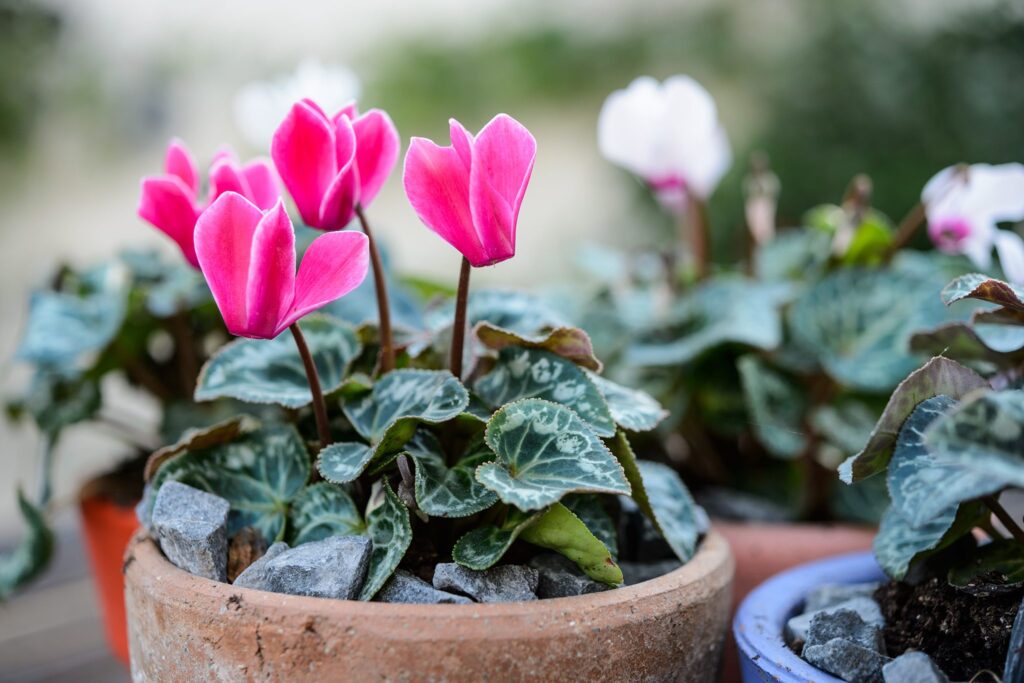
This image is property of images.immediate.co.uk.
Choosing the Right Winter Plants
Consider your climate
When selecting winter plants for your pots, it’s essential to consider the climate in your area. Different plants have different temperature requirements, and not all plants can withstand the harsh conditions of winter. Take some time to research the average winter temperatures in your region and choose plants that are suitable for those conditions.
Select plants with cold tolerance
Winter plants that have a high cold tolerance are your best bet for ensuring their survival in harsh winter conditions. Look for plants that are labeled as “cold-hardy” or “frost-resistant.” These plants have the ability to withstand freezing temperatures and will continue to thrive even when the mercury drops.
Keep size and growth habit in mind
When choosing winter plants for your pots, it’s important to consider the size and growth habit of each plant. Some plants tend to spread and take up a lot of space, while others grow more upright and compact. Consider the eventual size of each plant and make sure it will fit well in your pots without overcrowding or becoming too tall and top-heavy.
Choose plants with winter interest
To make the most of your winter pots, select plants that offer visual interest during the colder months. Look for plants that have attractive foliage, interesting textures, or colorful berries or fruits. These types of plants will add a touch of beauty to your outdoor space even when everything else is covered in snow.
Evergreen Plants for Winter Pots
Boxwood (Buxus)
Boxwood is a classic choice for winter pots, thanks to its dense evergreen foliage. These shrubs are slow-growing and can be easily shaped and trimmed into various forms. They provide a reliable backdrop for other winter plants and add a touch of elegance to any outdoor space.
Dwarf Alberta Spruce (Picea glauca ‘Conica’)
With its conical shape and dense green needles, the Dwarf Alberta Spruce is an excellent option for adding height and structure to winter pots. It looks particularly stunning when paired with colorful accents like berries or redtwig dogwood branches.
Yucca (Yucca filamentosa)
Yucca plants are known for their unique, spiky leaves and ability to thrive in harsh conditions. They add a touch of drama and texture to winter pots and can tolerate both cold temperatures and drought. Choose a compact variety like Yucca filamentosa ‘Color Guard’ for smaller pots.
Holly (Ilex)
Holly is a classic winter plant that adds a festive touch to any pot. With its glossy evergreen leaves and vibrant red berries, it provides a cheerful burst of color in the winter landscape. Choose a variety that suits the size of your pots, whether you prefer tall, upright hollies or compact, rounded ones.
Juniper (Juniperus)
Junipers are versatile and hardy evergreen shrubs that come in a variety of sizes and shapes. They can be used as focal points in larger pots or as fillers in smaller containers. Their blue-green foliage adds a beautiful contrast to other winter plants.
Pine (Pinus)
Pine trees are synonymous with winter, and their evergreen needles provide a lovely backdrop for other winter plants in pots. Choose a dwarf variety like Pinus mugo ‘Mops’ for smaller pots, or opt for a larger container and select a tall, slender pine for a dramatic centerpiece.
Heather (Calluna vulgaris)
Heather is a low-growing evergreen shrub that produces beautiful clusters of small bell-shaped flowers in winter. Its foliage ranges from green to shades of bronze and red, adding a pop of color to your winter pots. Heather also provides nectar for bees and other pollinators during the colder months.
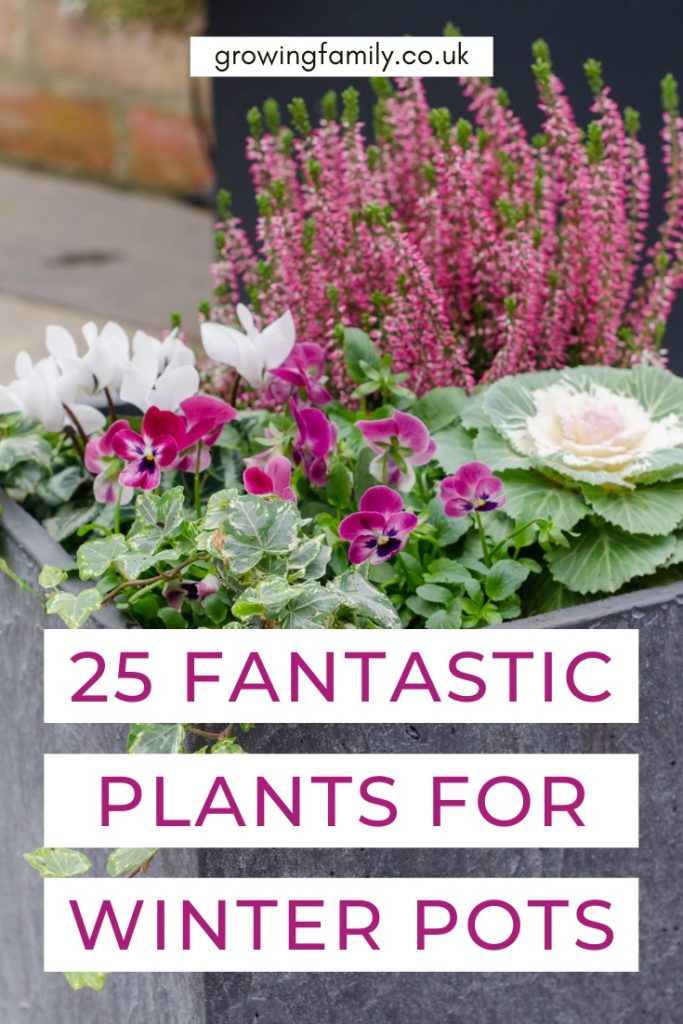
This image is property of growingfamily.co.uk.
Colorful Berries and Fruits
Winterberry (Ilex verticillata)
Winterberry is a deciduous holly that sheds its leaves in fall, revealing an abundance of bright red berries that persist throughout winter. These berries are a favorite food source for many birds and add a vibrant splash of color to your winter pots.
Cotoneaster (Cotoneaster)
Cotoneaster is a versatile shrub that produces small berries in shades of red, orange, or black. These berries can persist well into winter and attract birds to your pots. Cotoneaster comes in various sizes, so you can choose one that suits the scale of your containers.
Firethorn (Pyracantha)
Firethorn is a striking plant that produces clusters of bright orange or red berries that last throughout winter. These berries provide a beautiful contrast to the dark green foliage and can create a stunning focal point in your pots.
Nandina (Nandina domestica)
Nandina, also known as Heavenly Bamboo, is an evergreen shrub that produces clusters of red berries in winter. The berries persist for a long time and create a stunning display against the plant’s delicate, lacy foliage. Nandina is available in both compact and taller varieties, making it suitable for pots of various sizes.
Beautyberry (Callicarpa)
Beautyberry is a deciduous shrub that produces vibrant clusters of purple or white berries in fall. These berries can last well into winter and are a favorite snack for birds. Beautyberry adds a touch of whimsy and color to your winter pots.
Flowering Plants for Winter Interest
Hellebore (Helleborus)
Hellebores are beloved for their ability to bloom during the winter months when most other plants are dormant. Their delicate, cup-shaped flowers come in shades of white, pink, purple, and green, and provide a beautiful contrast to the winter landscape. Hellebores prefer partial shade and can be planted directly in pots or tucked among other winter plants.
Winter Jasmine (Jasminum nudiflorum)
Winter Jasmine is a deciduous shrub that produces bright yellow flowers in late winter or early spring. Its slender, vining branches can be trained to cascade over the edges of pots, creating a lovely waterfall effect. Winter Jasmine adds a touch of cheerfulness to your winter pots.
Winter Aconite (Eranthis hyemalis)
Winter Aconite is a bulbous perennial that produces bright yellow, cup-shaped flowers in late winter or early spring. Their cheerful blooms are often the first signs of spring and can add a burst of color to your winter pots. Winter Aconite is a small plant that works well as a filler or border plant.
Cyclamen (Cyclamen)
Cyclamen is a popular winter flower that comes in various shades of pink, purple, and white. Its delicate, upswept petals and silver-patterned leaves create an elegant display in pots. Cyclamen prefers cool temperatures and indirect light, making it an ideal choice for winter gardening.
Pansies (Viola × wittrockiana)
Pansies are hardy annuals that can withstand colder temperatures and continue to bloom throughout the winter. They come in a wide range of colors and have cheerful, expressive faces that add a touch of whimsy to your pots. Pansies are perfect for filling small gaps and adding pops of color.
Primrose (Primula vulgaris)
Primrose is a classic winter flower that blooms in various shades of yellow, pink, purple, and white. Its compact, rosette-shaped flowers are the perfect size for pots and can be used as standalone plants or combined with other winter blooms. Primroses prefer partial shade and cooler temperatures, making them a great choice for winter gardening.
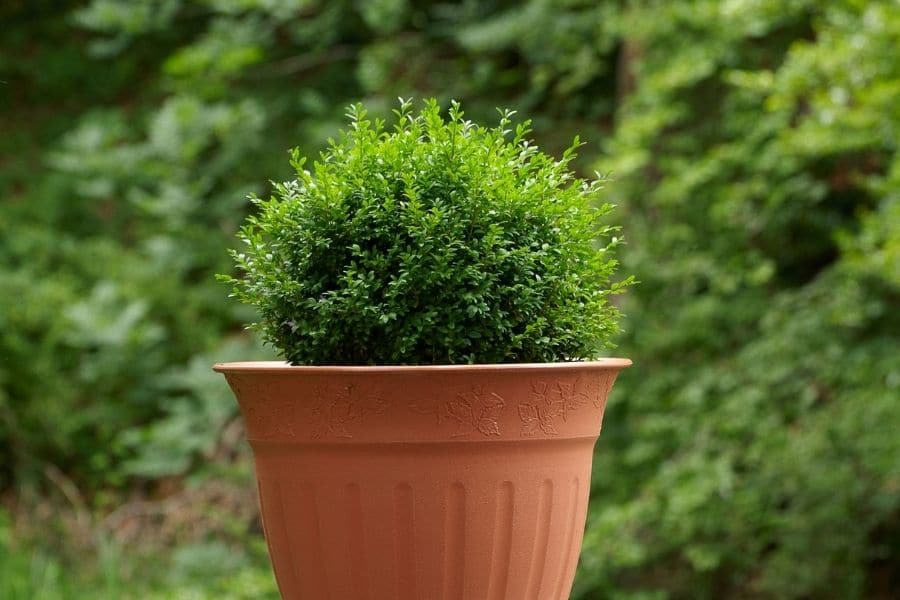
This image is property of jayscotts.com.
Grasses and Ornamental Veggies
Ornamental Grasses (Miscanthus, Pennisetum)
Ornamental grasses can add movement and texture to winter pots. Miscanthus and Pennisetum are two popular varieties that provide visual interest even when other plants have gone dormant. Their graceful plumes and different shades of green or bronze can create stunning focal points or fillers in your pots.
Kale (Brassica oleracea)
Kale is no longer just a staple in the vegetable garden – it has become a popular choice for winter pots as well. The curly or fringed leaves of kale come in various shades of green, purple, or white, adding texture and color to your outdoor space. Kale can withstand colder temperatures and looks particularly striking when paired with contrasting colors.
Swiss Chard (Beta vulgaris)
Swiss Chard is another leafy vegetable that can double as an ornamental plant in winter pots. Its large, colorful leaves come in shades of green, yellow, red, and purple, providing a stunning display of vibrant hues. Swiss Chard is a cool-season crop that can withstand colder temperatures, making it an excellent choice for winter gardening.
Red Cabbage (Brassica oleracea)
Red Cabbage is known for its beautiful purple leaves that can add a dramatic touch to your winter pots. This cool-season vegetable can withstand colder temperatures and provides an unexpected burst of color among the other winter plants. Red Cabbage looks particularly striking when planted alongside other plants with contrasting foliage.
Ornamental Kale and Cabbage (Brassica oleracea)
Ornamental varieties of kale and cabbage, also known as flowering kales and cabbages, are specifically bred for their attractive foliage. These plants come in various shades of green, purple, pink, or white, and their frilly leaves often resemble flowers. They add a unique and eye-catching element to your pots, especially when combined with other winter plants.
Winter-Scented Plants
Winter Daphne (Daphne odora)
Winter Daphne is a fragrant evergreen shrub that produces clusters of pink or white flowers in late winter or early spring. Its intoxicating fragrance is reminiscent of citrus and fills the air around your winter pots. Winter Daphne prefers partial shade and well-drained soil, making it a perfect addition to your winter garden.
Sarcococca (Sarcococca)
Sarcococca, also known as Sweet Box or Christmas Box, is a small evergreen shrub known for its intense fragrance. Its tiny white flowers bloom in winter and emit a sweet, vanilla-like scent that wafts through the garden. Sarcococca is a low-maintenance plant that thrives in the shade, making it a great option for pots in darker corners of your outdoor space.
Witch Hazel (Hamamelis)
Witch Hazel is a deciduous shrub that blooms in late winter or early spring, depending on the variety. Its fragrant, spidery flowers come in shades of yellow, orange, or red and add a burst of color and fragrance to winter pots. Witch Hazel prefers partial shade and moist, well-drained soil.
Viburnum (Viburnum)
Viburnum is a versatile shrub that offers beautiful flowers, foliage, and scent in winter. Varieties like Viburnum × bodnantense bloom in shades of pink or white and fill the air with a sweet fragrance. Viburnum also produces attractive berries that persist well into the winter, providing food for birds.
Winter Sweet (Chimonanthus praecox)
Winter Sweet is a deciduous shrub that blooms in late winter or early spring. Its small, waxy flowers come in shades of yellow or white and emit a delightful fragrance that lingers. Winter Sweet prefers full sun to partial shade and is an excellent option for adding both color and scent to your winter pots.
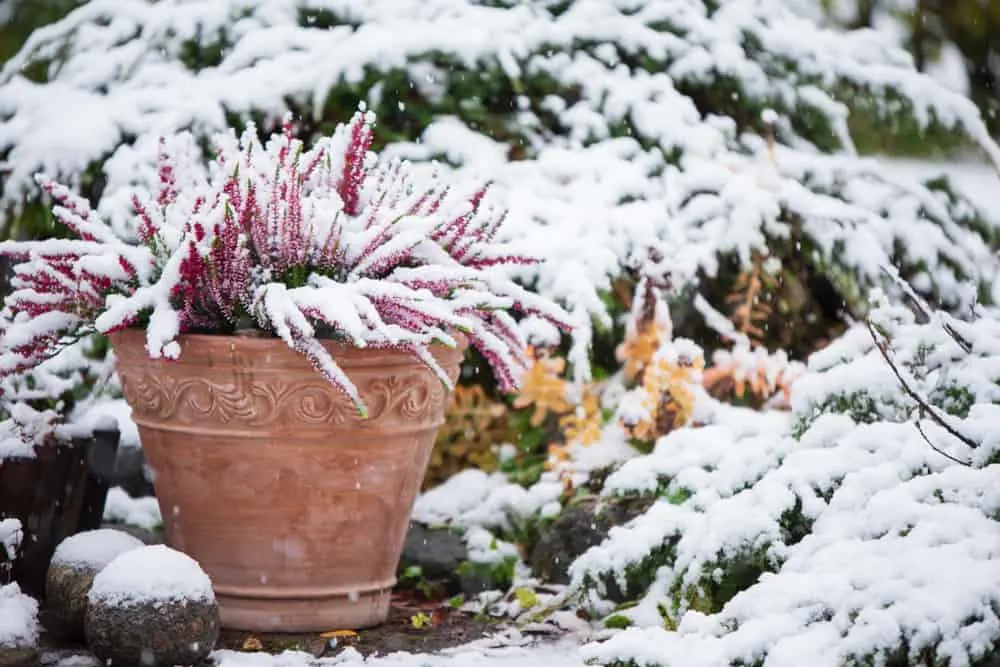
This image is property of www.bloomingbackyard.com.
Hardy Succulents for Winter Pots
Sempervivum (Hens and Chicks)
Sempervivum is a beloved succulent known for its rosette-shaped clusters of leaves. These hardy plants can survive freezing temperatures and even snow, making them perfect for winter pots. Sempervivum comes in various colors and textures, adding interest and uniqueness to your outdoor space.
Stonecrop (Sedum)
Stonecrop, also known as Sedum, is a resilient succulent that thrives in full sun and well-drained soil. There are many varieties of Sedum, but all offer fleshy, colorful foliage that adds texture and beauty to your winter pots. Some varieties, like Sedum ‘Autumn Joy,’ even produce clusters of pink flowers in late summer or fall.
Wintergreen (Gaultheria procumbens)
Wintergreen is a creeping evergreen shrub with glossy green leaves that release a delightful wintergreen scent when crushed. Its red berries persist throughout winter and provide a festive touch to your pots. Wintergreen prefers acidic soil and partial shade, making it an excellent choice for shady spots in your outdoor space.
Sedeveria (Sedeveria)
Sedeveria is a hybrid succulent that combines the best characteristics of its parent plants, Sedum and Echeveria. These rosette-shaped succulents come in various colors and are incredibly resilient, making them ideal for winter pots. Sedeveria adds a touch of beauty and uniqueness to your outdoor space.
Jovibarba (Jovibarba)
Jovibarba, also known as “Rolling Hen and Chicks,” is a low-growing succulent that forms tight clusters of rosettes. These hardy plants can tolerate freezing temperatures and even thrive in rocky or poor soil. Jovibarba adds a touch of whimsy and texture to your winter pots.
Fragrant Winter Plants
Paperbush (Edgeworthia chrysantha)
Paperbush is a fragrant shrub that blooms in late winter or early spring. Its creamy yellow flowers form dense clusters and emit a delightful perfume that fills the air. Paperbush prefers partial shade and well-drained soil, making it a stunning addition to winter pots.
Sweet Box (Sarcococca confusa)
Sweet Box is a shade-loving evergreen shrub known for its intensely fragrant flowers. Its tiny white blossoms bloom in late winter or early spring and perfume the air with a sweet fragrance. Sweet Box is a compact plant that works well in pots and brings a touch of scent to shady areas.
Christmas Box (Sarcococca hookeriana)
Christmas Box, also known as Hooker’s Sweet Box, is a small evergreen shrub with clusters of fragrant flowers that bloom in late winter or early spring. Its sweet scent fills the air and adds a pleasant fragrance to your winter pots. Christmas Box prefers partial shade and well-drained soil.
Winter Honeysuckle (Lonicera fragrantissima)
Winter Honeysuckle is a deciduous shrub that blooms in late winter or early spring. Its small, creamy white flowers release a delightful fragrance that attracts bees and other pollinators. Winter Honeysuckle is incredibly hardy and adds a touch of natural scent to your winter pots.
Japanese Osmanthus (Osmanthus fragrans)
Japanese Osmanthus is an evergreen shrub known for its fragrant flowers that bloom in late winter or early spring. Its small, white blossoms release a sweet, apricot-like scent that can perfume the air around your pots. Japanese Osmanthus prefers partial shade and well-drained soil.
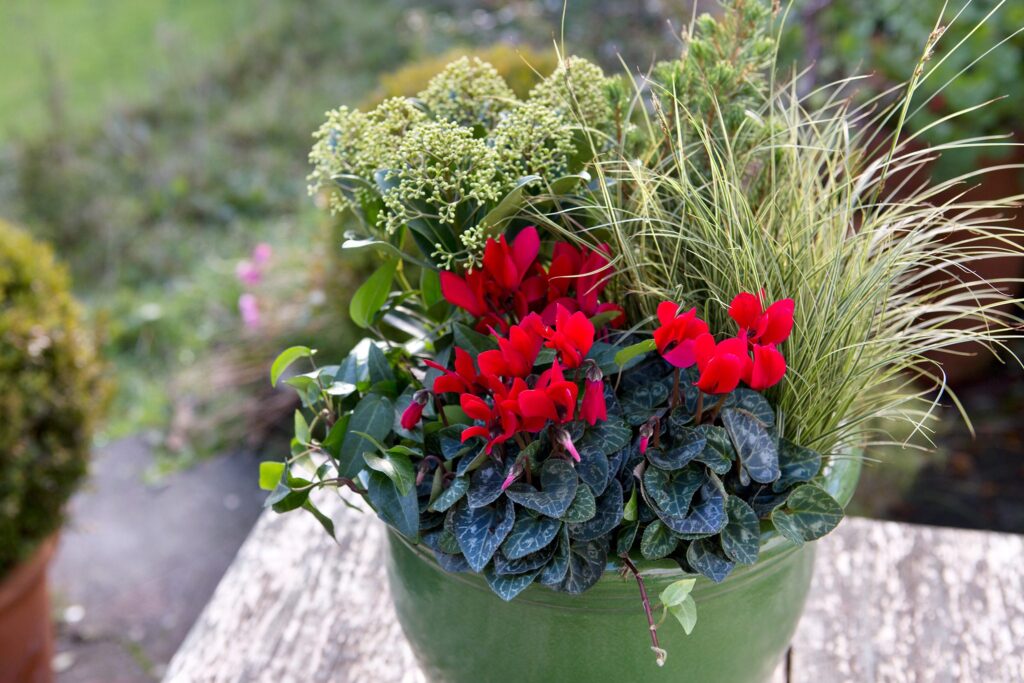
This image is property of images.immediate.co.uk.
Care Tips for Winter Potted Plants
Watering
Even though it’s winter, it’s essential to keep your potted plants adequately watered. While they may not need as much water as they would during the growing season, they still require moisture to survive. Check the soil regularly and water when it feels dry to the touch.
Mulching
Mulching your winter pots can help insulate the soil and protect the roots of your plants from extreme temperature fluctuations. Use a layer of organic mulch, such as straw or wood chips, to cover the soil surface. This will also help retain moisture and prevent weed growth.
Protecting from Frost
When freezing temperatures or frost is forecasted, it’s crucial to protect your winter plants from potential damage. Move your pots to a sheltered location, such as a covered porch or garage. Alternatively, you can cover the pots with frost blankets or burlap to provide an extra layer of protection.
Fertilizing
Most winter plants are relatively dormant during the colder months, so they don’t require much fertilizer. If you feel your plants need a nutrient boost, use a slow-release fertilizer specifically formulated for potted plants. Apply according to the package instructions and avoid overfertilizing, as this can harm your plants.
Pruning and Maintenance
Regular pruning and maintenance are necessary to keep your winter plants looking their best. Remove any dead or damaged branches and trim back any overgrown or straggly growth. This will help maintain the shape and appearance of your plants and promote healthy growth in the following seasons.
Monitoring
Keep a close eye on your winter pots and monitor the health of your plants regularly. Look for signs of stress, such as wilting leaves, discoloration, or pest infestation. Promptly address any issues that arise and provide the necessary care to ensure the survival and vitality of your winter plants.
Best Winter Plants for Different Pot Sizes
Small Pots and Containers
For smaller pots and containers, choose plants that will not overpower the limited space. Consider compact evergreens like Dwarf Alberta Spruce or Yucca, which provide structure without taking up too much room. Sempervivum and Sedeveria are excellent choices for succulent lovers, as they can thrive in small spaces.
Medium-Sized Pots
Medium-sized pots offer more room for larger plants, so you can experiment with a wider variety of winter options. Consider pairing evergreens like Boxwood or Juniper with colorful berry-producing shrubs like Winterberry or Cotoneaster. Flowering plants such as Hellebore or Winter Aconite can also shine in medium-sized pots.
Large Planters
Large planters provide ample space to create stunning winter displays. Consider planting taller evergreens like Pine or Holly as the centerpiece and surround them with flowering plants like Winter Jasmine or Primrose. Ornamental grasses like Miscanthus or Pennisetum can add height and movement, while winter-scented plants like Winter Daphne or Christmas Box can perfume the air.
In conclusion, choosing the right winter plants for your pots is essential for creating a beautiful and thriving winter garden. Consider your climate, select plants with cold tolerance, and keep size and growth habit in mind. Choose plants with winter interest, such as evergreens, colorful berries, flowering plants, grasses, scented plants, or hardy succulents. Follow proper care tips like watering, mulching, protecting from frost, fertilizing, pruning, and monitoring. Finally, select the best winter plants according to the size of your pots, whether they are small, medium-sized, or large. With the right selection and care, your winter pots can become a delightful and vibrant oasis during the colder months.

